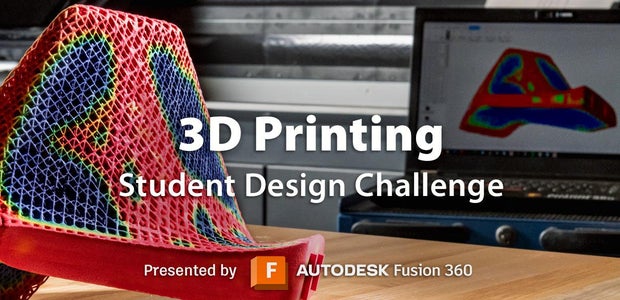Introduction: Noah's Ark Made From Old Kitchen Worktop and Wood Offcuts
{"context":{"location":{"href":"https://www.instructables.com/editInstructable/publish/E3X0I1GII94VL9X","origin":"https://www.instructables.com","protocol":"https:","host":"www.instructables.com","hostname":"www.instructables.com","port":"","pathname":"/editInstructable/publish/E3X0I1GII94VL9X","search":"","hash":""},"jQuery112405811038626665339":1},"selector":"#editor-Object-14"}
Step 1: The Worktop Hull Day 1
A couple of weeks ago however I received a text message from a very good
friend of mine who was fitting a new kitchen sink into his worktop. It was solid oak and "was as hard as steel" and was asked if I wanted it otherwise it would be taken to the dump. This is the picture I received with the message.
When I received the top I had a bit of chipboard and screws to remove and then cut some excess bits off. You can see where I had started drawing on the wood to make sure my template for the hull fitted the worktop.
I then had to plane off 10 years worth of Danish oil using a woody jack plane, which proved to be easier than I thought.
The side profile template was then drawn onto the worktop
Then cut into it's sections. You can see that one of the laminations is
running vertical, rather than horizontal. This wasn't a problem as I would hold this piece in the middle and wouldn't really be affected by the carving process as much as the others.
These were then glued together and left over night to dry.
Step 2: Worktop Hull Day 2
After 24 hours the clamps came off and the top profile was ready to cut out. You can just make out the brown pencil marks on the deck and sides.
To do this on such a curved surface in a big bandsaw would be too dangerous and so mounted the ark to a piece of scrap plywood to hold the ark at a good and safer position.
Once roughed out, the f clamp I use to hold the work so my hands are well clear of the bandsaw blade.
I then used the two screw holes I had used to mount the plywood to then mount a mounting block to. (Although this proved pretty useless in the long run as the sides of the ark were pretty flat for my vice jaws to hold.)
Step 3: Worktop Hull Day 3 - Carving and Sanding
The hull was then carved (Sorry I lost the picture of this) and then rasped to a more even finish. Next I worked on the deck. A 1cm line was marked all the way around the deck and then this was carved out. I decided to leave part of the middle section with the end grain face to create a sort of tenon for the housing for the cabin.
Step 4: Worktop Hull Day 4- Installing the Cabin
After much fettling on the deck the cabin was finally glued into place over the tenon. The4 walls were cut of out some thin pieces of oak offcuts we had knocking around left over from another project.
Once dried the windows were then drilled into place using a 8mm drill bit.
Step 5: Worktop Hull Day 5 - Adding the Walnut Trim
Now came the tricky part of mounting the trim to the hull. I am a fan of adding contrasting wood to my carvings and a lot of the time I use Oak and Walnut. It was decided to use Walnut for the roof and also add a walnut trim around the top of the hull. This was done before the roof was mounted so I could get me clamps in place more easily. Strips of off cut walnut was ripped down and then soaked in boiling water for an hour before being held into place with lots of f clams and my carvers vice. This was done for both sides.
Step 6: Trimming the Walnut Trim and Adding the Roof
Once dried and the trim was reduced so it would meet the top of the hull (I had deliberately cut over the length to allow for mistakes at this stage and would also make lining up the bottom of the trim much easier too) The roof was then mounted into place and then given a coat of shellac (you can see some of the animals I have already carved by the hull)
Step 7: Mounting the Ark to a Base
Now a base needed to be added to hold the ark stable. It did already sit pretty stable, but wanted to mount it. This version would be more for display than a toy. I bored into the bottom of the ark using the holes that were use to mount the mounting block and made two 16mm holes into the hull. I then used the piece of plywood that I used to original bandsaw the arks shape to make the two corresponding holes in the base. These then had two holes bored into them using a 15mm forstner bit. Two lengths of 16mm dowel (salvaged from something I was about to throw out) were then glued into the base (not the ark end yet as I would need to remove it to work more on the base).
Step 8: Adding the Waves
I wanted to add waves to encase the ark. So I took some offcuts of softwood left over from Dave's current project and ripped these in half. I then bandsawed waves out of them.
The wave pieces were then sanded and glued together. Then they were painted. It made sense to paint the inside first before the base was fully assembled as the hull would make a lot of the areas difficult to reach. One coat was added to the outside but another coat would be added once the base was glued together.
The ark was then glued to the base and left to dry overnight. The picture below shows the waves assembled, but these have not been glued into place yet. (Not the two white blobs on the roof - these are doves minus the olive branch)
Step 9: The Animals
Most of the animals were made from offcuts of ash I had left over from the garden bench I was building before this project. A profile was drawn and then cut out on the band saw before carving with a knife and then sanding. A number of people have made comments on how many animals I would have to carve but as the hull is solid oak and the deck surrounding the ark is quite narrow not as many animals had to be made. These would all be fixed in place as I decided early on that this would be a display piece and not a toy. The first animal I made was the giraffe. It made sense to make the tallest animal first and then work down. The natural colour of the ash worked really well as the main colour of the giraffe and then painted spots onto them later on.
Most of the tiny animals where carved out of lime offcuts I had and then I used copper wire offcuts to act as legs. These were mounted to them using a pin vice to drill 4 holes in the underside of the body and then the wires were glued into place.
The tusks of the elephants were also made from copper wire and were fitted with the same method as mentioned above.
I used acyclic paints to paint all the figures
The animals I ended up carving are as follows.
Noah & Wife
2 x Elephants 2 x Sheep 2 x Zebra 2 X Giraffe 2 x Camels 2 x Hippos 2 x Pigs 2 x Tigers 2 x Penguins 2 x Doves on roof (Complete with Olive Branch)
Step 10: Completion
All the animals and Mr and Mrs Noah were then glued into place onto the deck finishing the project.

Participated in the
Homemade Gifts Contest 2015

Participated in the
Leftovers Challenge














3 Comments
7 years ago
Good work, very nicely done.
7 years ago
This is beautiful! What a great design
7 years ago
This is so cool! I am super impressed here! Waw! :)